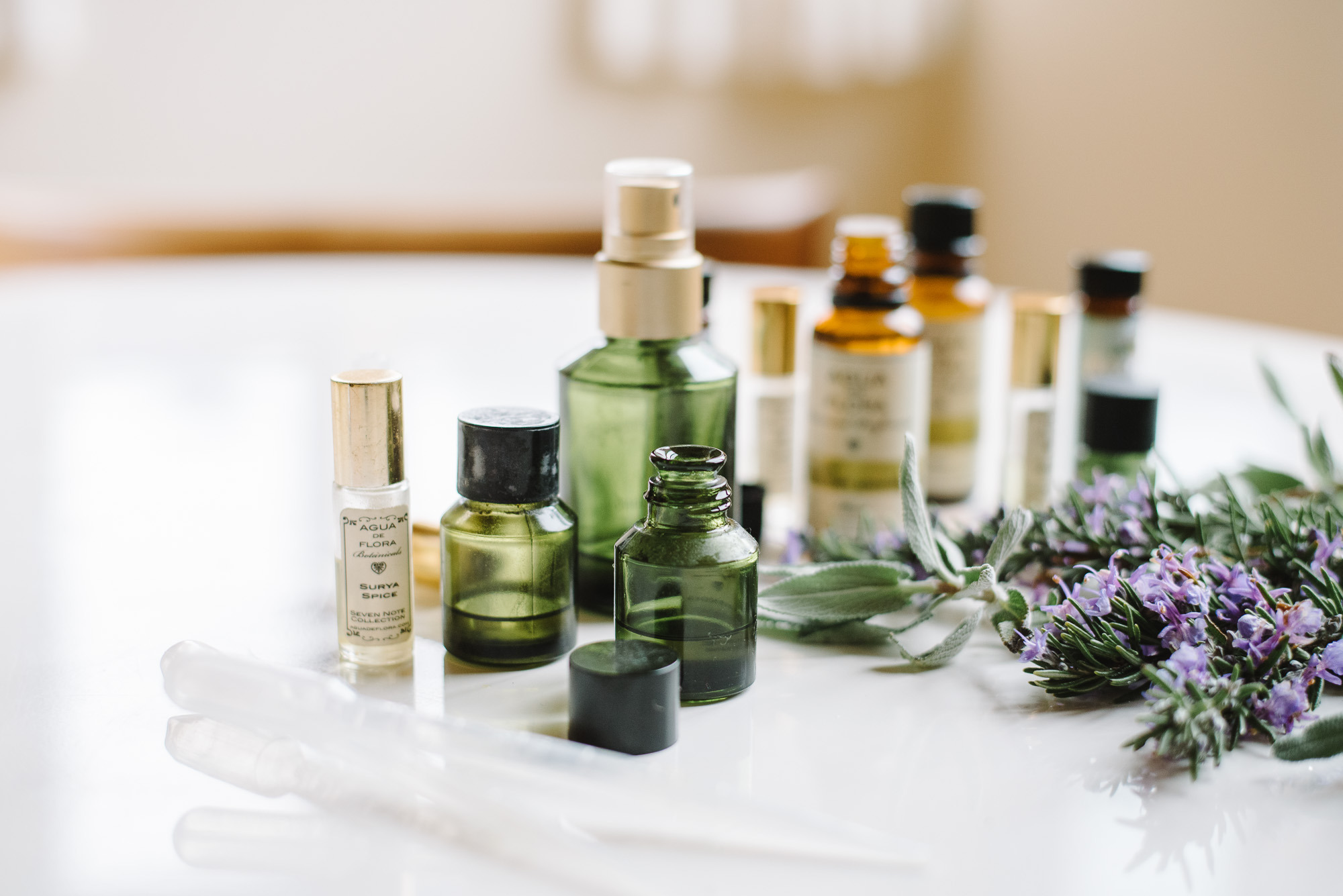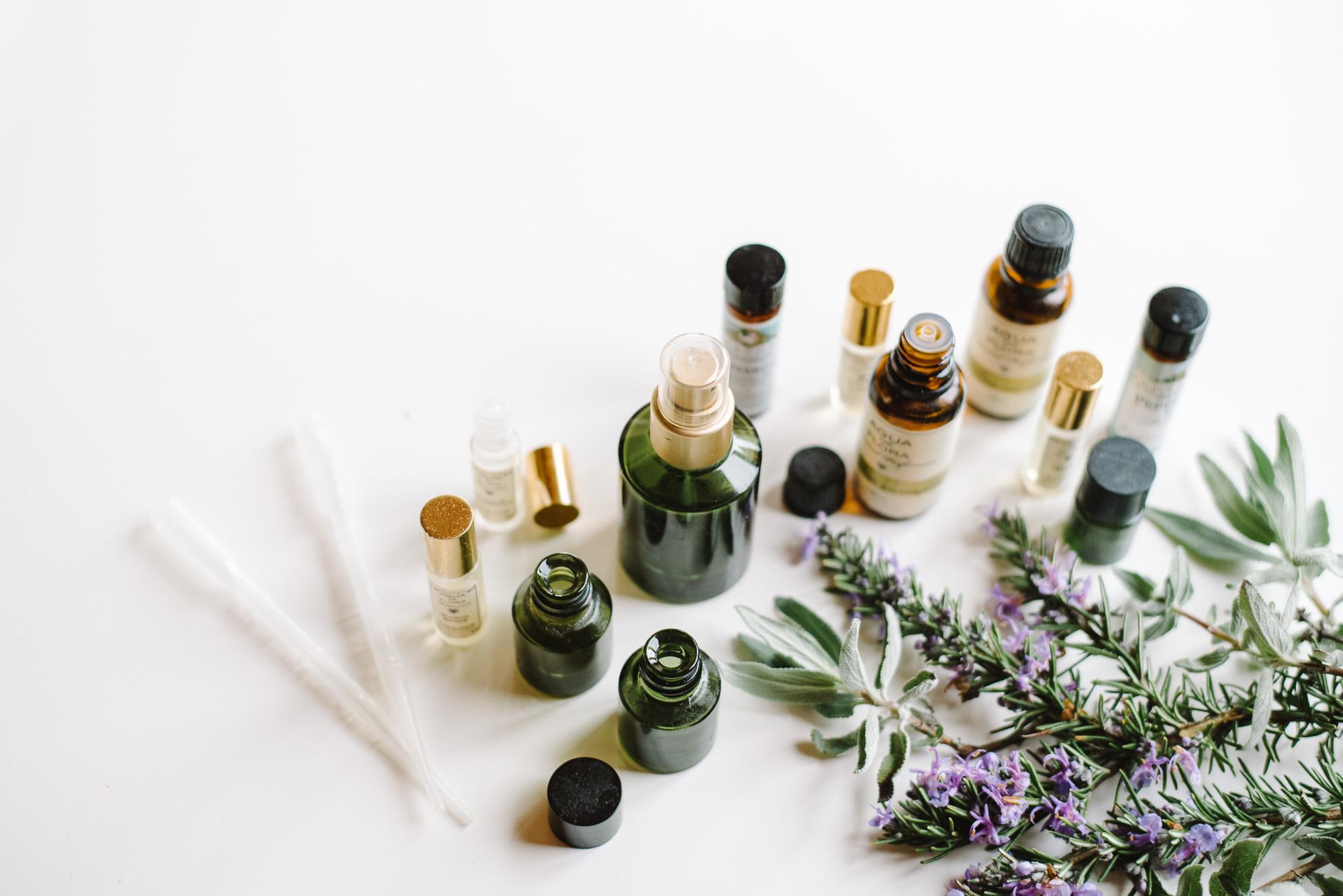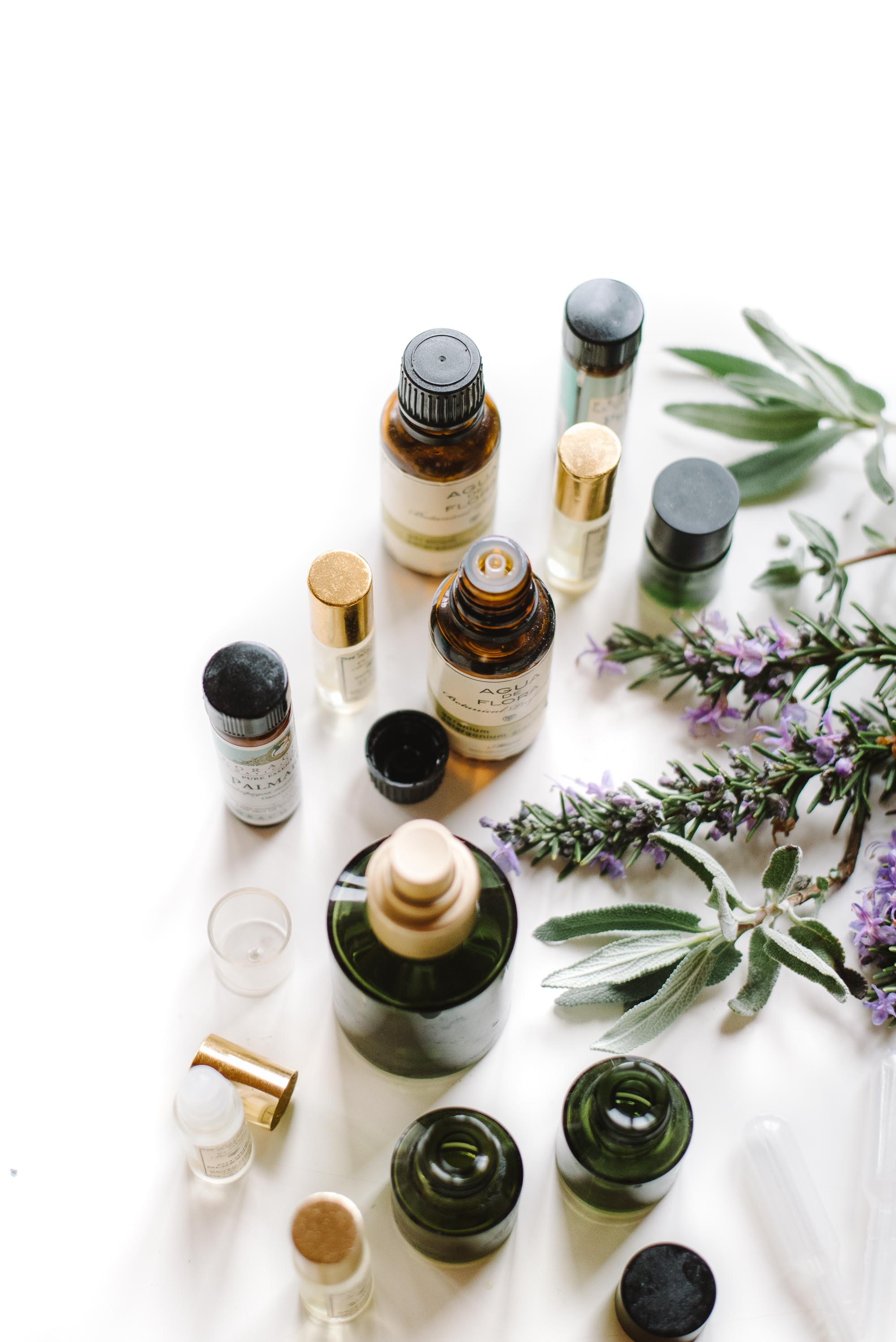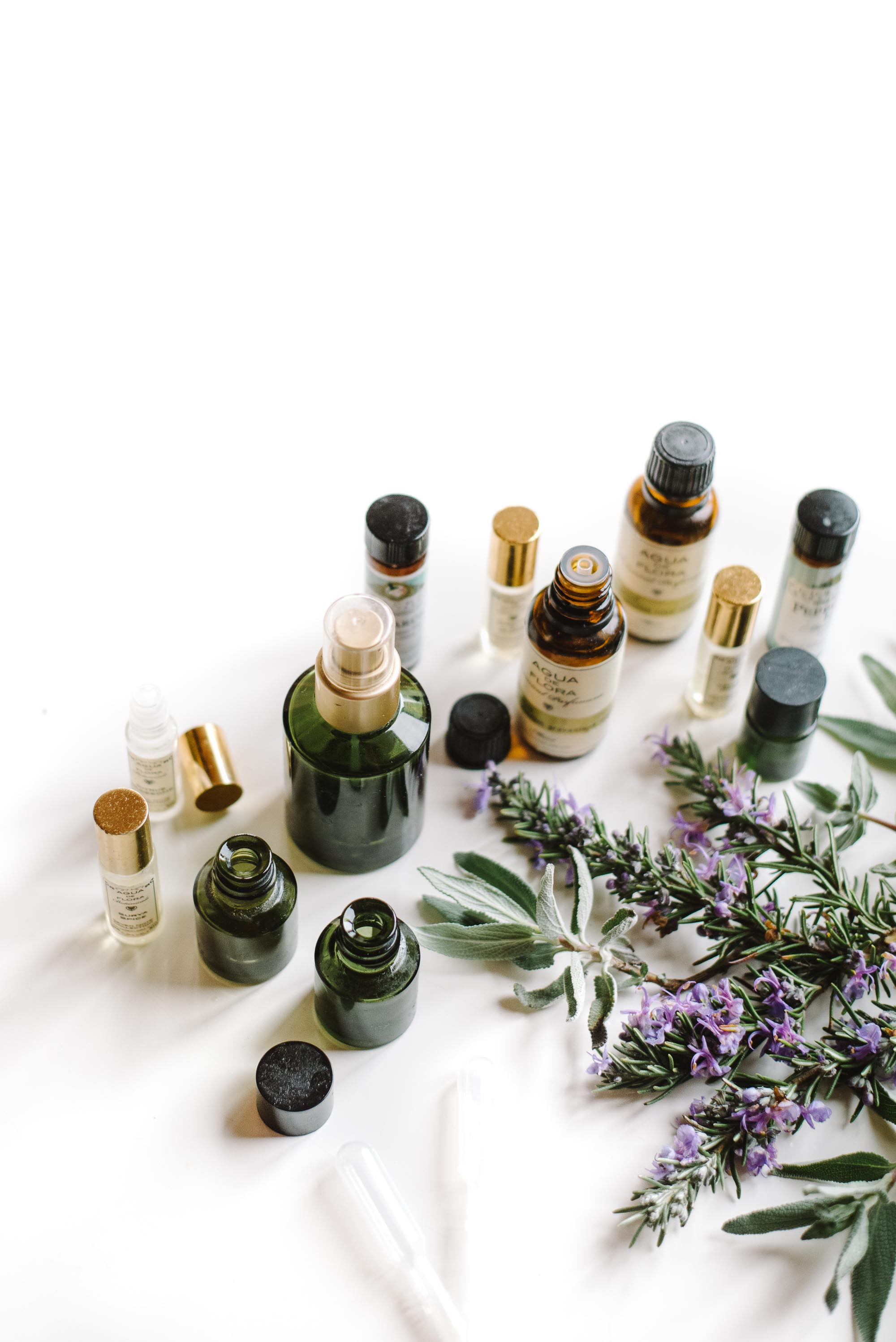
This post contains Amazon affiliate links.
Chances are, if you’re a self-care- or wellness- prone human who spends any amount of time on the internet today, you’ve heard of essential oils. Chances are also that you don’t really know what essential oils are, why you should use them, how to use them, or even where to get them. I understand. And I am here to help.
Why should I be the one to help? Because I’ve been speaking the language of essential oils for literally my entire life. My mother was an aromatherapist and an herbalist, and my parents had a body care and spa product company in which I cut my teeth as a young professional in the Wild West of wellness. My mother studied with herbal queen Rosemary Gladstar, and authored two books, Living With the Flowers and its second edition, The Complete Book of Flowers.
Today, I see much misinformation and confusion circulating about how and why we should use essential oils—and I’m here to clear some of that up. As my mother would have said, these plants are our allies, but we must know how to use them. We must know how to listen to them. And we must respect their potency. Essential oils are strong plant medicine, and must be used appropriately to reap their benefits.

Here, I’ll give you the rundown on what, why, how, and where to use essential oils, along with the top 5 oils I keep on hand for daily use and healing.
You can find a great deal more information on using aromatic herbs and flowers in my book Kale & Caramel: Recipes for Body, Heart, and Table.
WHAT ARE ESSENTIAL OILS?
An essential oil is the oil extracted from its originating plant, typically by distillation (using steam) or expression (as how citrus skins express oils when broken). The extraction process yields a highly concentrated oil that should be used with care, since its intensity can cause both external (skin) and internal irritation.
Essential oils have been used for millennia in cosmetic, medicinal, and aromatic applications. Evidence points to earliest use of essential oils in ancient Egypt (2000 BC), and perhaps even earlier in China and India. The Greek physician Dioscorides described use of essential oils in his medical tomes of 1st century AD, as did Avicenna, one of the forefathers of modern medicine, in the 10th century AD.
The use of essential oils for healing properties is called aromatherapy, a term coined by French chemist René-Maurice Gattefossé in 1910. Gattefossé, who experienced extraordinary healing results after submerging burned hands in a vat of lavender oil, wrote the first book on aromatherapy in 1937, entitled Aromathérapie: Les Huiles Essentielles, Hormones Végétales (the English version came out in the ’90s). During World War II, a French military physician named Jean Valnet began using essential oils to treat wounded soldiers.
In the mid-20th century, Marguerite Maury, an Austrian biochemist (and finally, a woman in all this scentual history) began championing the use of essential oils mixed into a carrier oil for massage therapy. And in 1977, Robert Tisserand wrote the first English language book on the art of aromatherapy.
Aromatherapy was thus born, a way to use essential oils for healing of all kinds. Today, aromatherapy is used widely around the world.
WHY SHOULD I USE ESSENTIAL OILS?
I may be the daughter of an aromatherapist, but I’m also a skeptic. And while no scientific research has conclusively demonstrated the medical or psychotherapeutic effects of essential oils, I believe there is validity in my own lived experience. So while I would never use essential oils to treat serious physical, psychological, or emotional ailments, I do experience great relief and joy in their use. Try them yourself and see how you feel.
I experience a wide range of benefits from using essential oils, and outline some of those below, with the corresponding oils.
Essential oils are excellent for:
- Regulating mood: lavender, rose, neroli (orange blossom), peppermint, geranium and rose geranium
- Relieving anxiety: lavender, rose, neroli
- Reducing inflammation: lavender, peppermint, tea tree
- Improving the appearance of skin: sandalwood, lavender, rose, geranium and rose geranium, frankincense, tea tree (for acne)
- Easing nausea: peppermint, ginger, cinnamon
- Easing headaches: lavender, peppermint
- Clearing congestion: eucalyptus, tea tree, rosemary, oregano
- Reducing fever: lavender
- Boosting the immune system: oregano, lavender
- Aphrodisiac: jasmine, neroli, vetiver
- All-natural perfume: jasmine, vetiver, cedar, sandalwood, juniper, neroli, rose, any plant you can imagine
- And so much more: For more information on essential oils, I recommend my mother, Denise Diamond’s book Living With the Flowers, and my book Kale & Caramel: Recipes for Body, Heart, and Table.

HOW DO I USE ESSENTIAL OILS?
Essential oils can be used in three different ways:
- Atmospherically: Via diffuser, spray bottle, or other method of aeration.
- Topically: On the skin, either directly or in a carrier oil (see below for further instruction).
- For face and body: To use essential oils topically on your facial skin, blend just a few drops of essential oil in a carrier oil, like sweet almond or jojoba oil. Because essential oils are so strong, even a single drop can have a profound effect.
- For perfume: Most perfumes should also consist of essential oils mixed into a carrier oil. If you would like to apply an oil directly to your pulse points as a perfume, try one single drop on your wrists to test for possible skin irritation.
- Blend your own: Pick up some 4- or 8-ounce glass bottles with dropper lids—as well as some pipettes to measure essential oil drops—from Amazon to start blending your own oils.
- Read my guide to using natural oils to moisturize your skin.
- Internally: Some essential oils can be ingested, if they are of food-grade quality and specifically marked for internal use. Only ingest oils that are specifically labeled food-grade. Personally, I prefer to ingest aromatic hydrosols (water distillations of plants), as I believe these to be safer.
WHERE DO I GET ESSENTIAL OILS?
Essential oils may seem expensive on first glance, but remember that you’re only using a few drops at a time. A one ounce bottle might last you years. Places to purchase essential oils:
- Your local health food store: Many health food stores sell high-quality essential oils, often with testers so you can smell before you buy. As with buying food, organic options may provide a higher quality oil. Keep an eye out for the oil’s source, as well.
- Your local apothecary shop: You know that little witchy shop that sells crystals, incense, and moon charts? They definitely have essential oils, too. And likely someone working there who knows a bit about oils.
- Online: A few favorites I trust:
- Mountain Rose Herbs: Excellent for purchasing affordable staples.
- Floracopeia: For when I want super high quality, wildcrafted oils and blends.
- Agua de Flora: These exquisite perfume blends are made by friends of mine, using oils hand-distilled by some of the world’s most skilled living plant whisperers.
- Young Living: I trust their food-grade oils for ingestion, if that’s your thing.
- Amazon: Always there for a good search binge.

THE 5 ESSENTIALS FOR EVERYDAY USE
Finally, here are my top five essential oils for everyday use.
Lavender
Lavender is an all-purpose healer that soothes and calms the nervous system, supports rest and relaxation, reduces fever, boosts the immune system, uplifts mood, and provides anti-inflammatory effects for the skin (burns, rashes, and irritation). Excellent to travel with, as it’s naturally antibacterial.
Peppermint
Peppermint is a whiz at easing nausea and headaches, and putting some pep in your step when you’re exhausted or worn out. Also great for travel.
Rose
Rose is the perfect wind-down after a long day, or a sweet and gentle way to begin an adventure. It helps calm and open the heart, soothes rocky emotions, and tames inflammation. It’s a go-to.
Tea Tree Oil
Tree tree is phenomenal for drying up skin congestion and acne, and is also antibacterial, making it an excellent travel companion.
Jasmine or Neroli
I alternate between using jasmine and neroli as mix-ins for my full-body and facial moisturizers. There are many different types of jasmine; neroli is orange blossom, which also may have varietals. They’re both exquisite, intoxicating florals that have an aphrodisiac effect. Warning: You’ll probably want to make out with yourself after application. They’re lovely paired with one of the woods below.
Sandalwood or Cedar or Juniper
These woods bring clarity, sanity, and a sense of connection to the earth. Sandalwood is an excellent multi-purpose mix-in for both facial and body oils. Cedar and juniper are great for body oils as well as in more concentrated perfume use, along with sandalwood—which pairs particularly well with florals.
Bonus: Vetiver
My current favorite essential oil is vetiver, extracted from the roots of a bushy grass. Vetiver smells like the spicy, fecund floor of a rainforest, and is the perfect match for a light floral, like neroli.
What are your favorite essential oils, and how do you use them? Please leave any additional questions below, and I’ll do my best to answer them.
All skin conditions, medical ailments, and psychoemotional challenges should be immediately treated by a qualified medical professional.



